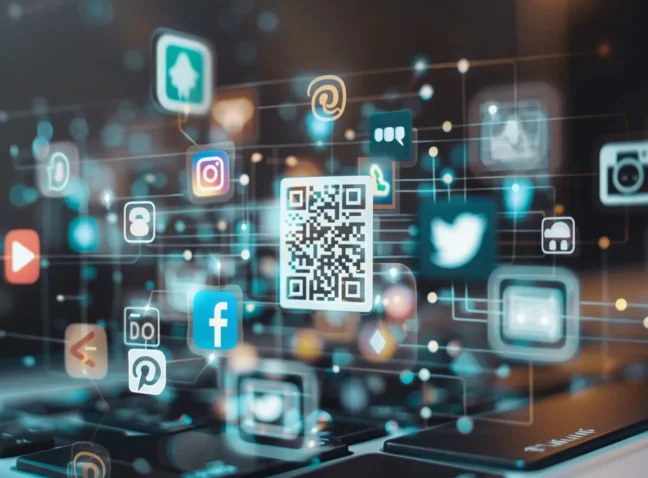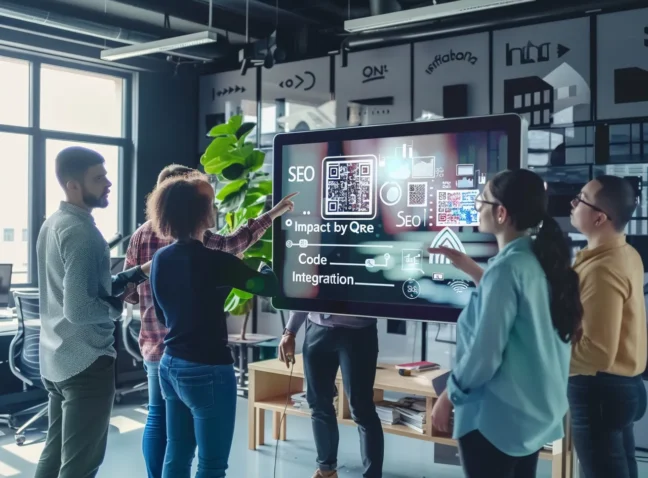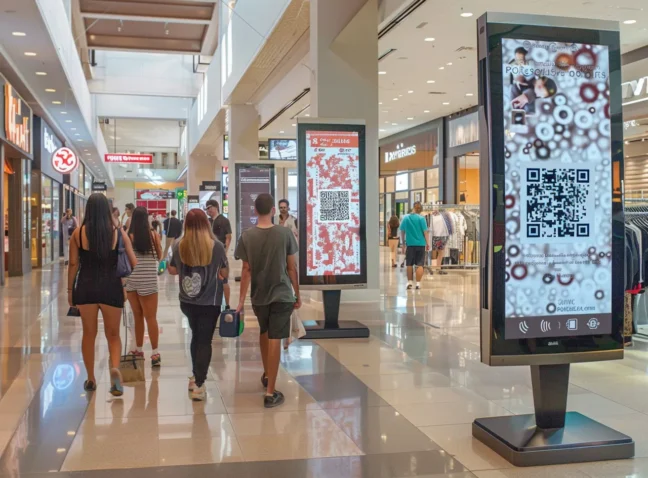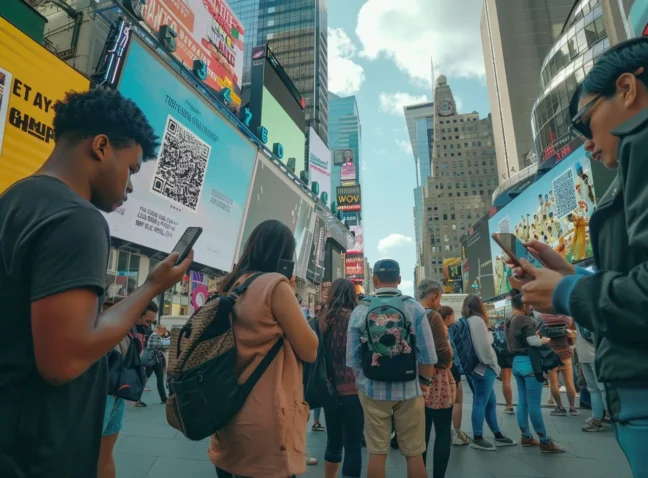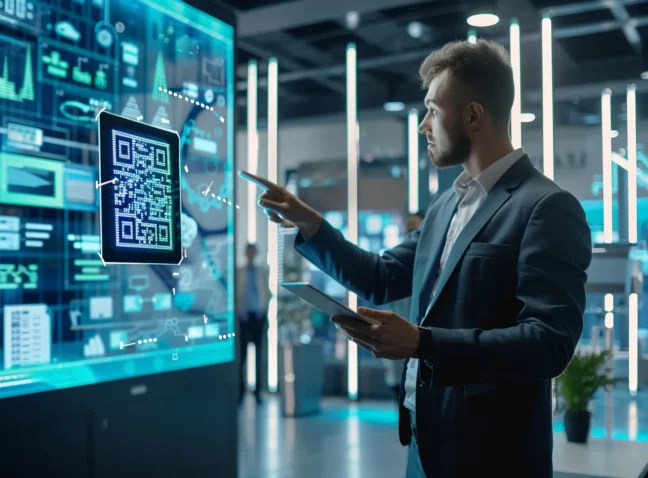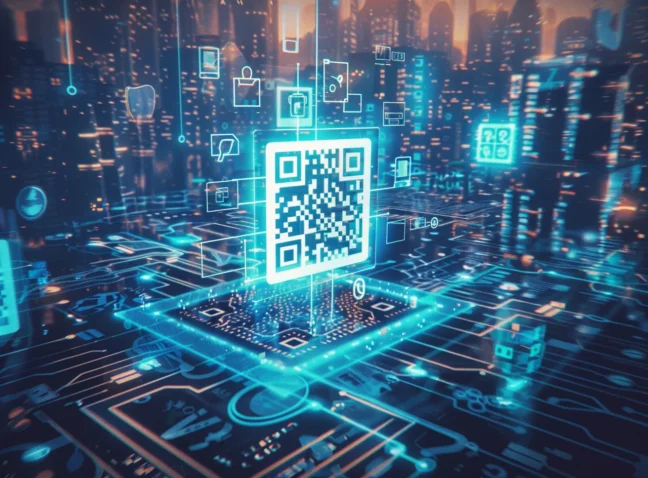Train journeys are becoming ever more popular. For instance, in Europe by 2028, trains will rack up a huge 679 billion passenger kilometers. The US is even to utilize the railways more, too, with 26.85 billion passenger kilometers in 2019 despite trains not being the most popular method of transport. But, that’s set to change, as infrastructure across the US improves, and with the introduction of QR codes which are set to make the experience even more pleasurable.
In this article from MyQRCode, we’ll be exploring how the implementation of QR codes for railways will completely change the game. Whether it’s for streamlining ticket purchases or improving the travel planning process, they’re an implementation that shouldn’t be ignored. So, let’s jump in!
Why Choose QR Codes for Railways?
Versatile and functional, QR codes optimize ticketing, scheduling, and feedback collection for railways. Accessible across devices, they simplify journey planning, ticket purchases, and service inquiries. It’s all about the increased passenger experience, which is sure to make a huge dent on the whole industry.

Advantages of QR Codes for Railway: Improved Passenger Experience
QR codes are already being used on railways. Passengers can often see them on ads placed within railcars. Unfortunately, it’s taken a little while longer for rail companies themselves to implement QR codes for railways. But they’re beginning to get involved, and have seen a number of advancements.
QR Codes for Railways: Transforming Train Travel in 2024
QR codes in railway stations and on trains provide passengers with instant access to digital tickets, real-time schedules, platform information, and onboard services. Train operators use QR codes to streamline ticket validation, enhance passenger communication, and improve the overall travel experience. These scannable codes are typically displayed on platforms, inside train cars, and at ticket gates to enable quick access to essential travel information.
Whether you’re a railway operator looking to modernize your passenger experience or a commuter interested in the digital transformation of train travel, My QR Code offers solutions to create and implement QR codes across railway applications. Let’s explore how these two-dimensional barcodes are revolutionizing rail transport and improving the passenger experience across stations worldwide.
QR Code Applications in Railway Stations
Railway stations worldwide have embraced QR code technology to enhance passenger services. From ticket halls to platforms, QR codes help travelers navigate stations more efficiently. Passengers can scan QR codes to access interactive station maps, locate amenities, and receive real-time updates about their journey.
Train operators have found particular success implementing QR codes for queue management and passenger flow control. During peak hours, strategically placed codes help distribute crowds by providing alternative route suggestions and platform updates. This digital solution has proven especially valuable during major events and service disruptions, when traditional information displays may become overcrowded.
Digital Ticketing Through QR Codes
The transition to QR code-based tickets represents one of the most significant improvements in railway operations. This shift has dramatically reduced paper waste and simplified the ticket checking process, leading to faster boarding times and improved passenger satisfaction. Digital tickets displayed as QR codes allow for instant validation and updates, while also providing railways with valuable data about travel patterns and usage.
Modern railway systems use QR codes for ticket validation at multiple touchpoints throughout the passenger journey. From entry gates to onboard checks and exit points, this contactless system speeds up passenger flow while maintaining secure access control. The technology also enables flexible ticketing options, such as dynamic pricing and last-minute changes, which weren’t possible with traditional paper tickets.
Real-Time Train Information
Perhaps the most practical application of railway QR codes is providing instant access to travel updates. By scanning codes placed strategically throughout stations and on trains, passengers can immediately access live departure and arrival times, platform changes, service disruption updates, and alternative route suggestions. This real-time information helps travelers make informed decisions about their journey while reducing the strain on station staff during disruptions.
The ability to push immediate updates through QR codes has proven particularly valuable during unexpected service changes or weather-related disruptions. Passengers can quickly access alternative route options and service updates without needing to locate information boards or staff members.
Onboard Services and Entertainment
Modern trains are incorporating QR codes to transform the onboard experience. Codes placed on seat-backs or carriage walls connect travelers to a range of digital services, including entertainment systems, food and beverage menus, Wi-Fi networks, and customer feedback forms. This digital integration not only improves passenger satisfaction but also provides operators with immediate feedback about service quality.
Some innovative operators have begun using QR codes to enable seat reservations and upgrades during journeys, creating new revenue opportunities while offering passengers more flexibility. These codes can also provide access to journey-specific information such as connection times and platform numbers for upcoming stations.
Safety and Emergency Information
Railway operators increasingly use QR codes to make safety information more accessible and interactive. Instead of relying on static printed materials, QR codes provide immediate access to emergency procedures, safety guidelines, contact numbers, and evacuation routes. This digital approach ensures critical information is always current and available in multiple languages.
In emergency situations, QR codes can quickly direct passengers to relevant information or emergency services. They can also be used to distribute important safety updates or procedural changes without the need to replace physical signage.
Maintenance and Staff Operations
Behind the scenes, QR codes have revolutionized railway maintenance and staff operations. Each piece of equipment or infrastructure component can be tagged with a unique QR code linking to comprehensive digital records. This system gives maintenance teams instant access to technical specifications, repair histories, safety protocols, and maintenance guides.
The implementation of QR codes in maintenance operations has led to more efficient inspections, faster repairs, and better record-keeping. Staff can quickly report issues, access repair manuals, and update maintenance records simply by scanning the relevant code.
Implementation Best Practices
Successful implementation of QR codes in railway environments requires careful consideration of several factors. Codes should be positioned at eye level in well-lit areas, with consideration given to passenger flow and typical viewing distances. For outdoor installations, weather resistance is crucial – UV-resistant materials and protective coverings help maintain code integrity in all conditions.
Clear instructions and indication of what information passengers will access helps build trust and encourages usage. Regular testing and monitoring ensure codes remain scannable and links remain active. Additionally, ensuring accessibility for all passengers, including those with disabilities, should be a key consideration in any QR code implementation strategy.
Future of Railway QR Codes
The railway industry continues to discover innovative applications for QR code technology. Future developments may include personalized journey planning, automated delay compensation claims, integrated multi-modal transport solutions, and enhanced accessibility features. As smartphone technology evolves and passenger expectations grow, QR codes will likely play an even more significant role in railway operations and passenger services.
Emerging trends suggest QR codes may soon facilitate seamless connections between different transport modes, enabling truly integrated journey planning and ticketing. The technology could also support more sophisticated passenger flow management and predictive maintenance systems.
Top Brands and QR Codes for Railway Connectivity
Railway QR codes are already being utilized in new and exciting ways. In the first three months of 2024 alone, there’s already been a staggering 27 million QR code scans, showing the growing need for QR codes to be implemented more in our daily lives. And many companies are starting to recognize that need, especially on the railways.
Below, we’ve curated a few brands that have implemented QR codes on railways. It seems it’s only the beginning, too, as more railway companies will start to recognize the utility of QR codes. So, expect this list to expand in time:
- In the UK, SWR (South Western Railway) trialed QR codes for railways in 2023. They implemented QR codes on the back of seats and in the standing sections of their railcars. When passengers scanned the QR code, they would be able to access a wealth of travel information. This included things like travel information, the number of stops on a line, and any delays that might slow down a journey.
- In India, where travel by rail is one of the most popular ways to get around the country (with a daily passenger count of 24 million), railway QR codes are being implemented at ticket booths to allow for easier purchasing options for travelers. These are being implemented across North Central Railway stations as well, and have vastly improved processes for TTEs as well (Train Ticket Examiners).
- Moving to East Asia and examining Japan’s very clever use of QR codes in its Tokyo Metro. They utilize QR codes for railways to handle train car door openings and closings. Using cameras suspended above platforms, cameras scan the QR codes once the train has come to a complete stop, sending a signal to open the doors. Once passengers have left the train and others have boarded, another signal is sent to close the doors. Genius, and a surprisingly novel idea!
- In Vietnam, QR codes are being used for passengers to access local Vietnamese delicacies on their travels. This was implemented on Vietnam’s government-run national railway, for passengers traveling from the nation’s capital Hanoi. As you can see QR codes for railways can be used even for more enjoyable experiences for passengers.
As you can see, there are many ways that QR codes for railways can completely change how we travel. Or in Japan’s case, be used to handle simple (but important) station processes. However, this list only scratches the surface on the kinds of advantages railway QR codes can bring.
QR code generator for Railway
QR codes for railways are beginning to see more use in the modern era. And for good reason, too! They can make ticket payments less complicated, and remove the need for crowded ticket booths. There’s plenty of reason for railways to get involved.
Eager to upgrade your train rides with just a scan? Swing by our QR code generator for rail services and discover how one quick scan can smooth out your travel experience. Here’s to making every journey easier and more tech-advance! Start now and enjoy the ride!
